While most young-earth geologists accept Snelling and Dickens’ Precambrian model, or some variation of it, others have reservations. This is a healthy and normal part of the scientific process. Criticism from academic peers is a crucial aspect of building a good scientific model. It quickens the identification of strengths and potential weaknesses for the model in question. In addition, it allows advocates of the model to develop defenses for their views or modify them accordingly. As we close out this series, we will consider what other creation scientists have argued in response to Snelling and Dickens’ model and see what the future holds for creationist research of the Precambrian.
History Recorded in the Rocks
One of the biggest hangups people have with assigning most or all of the Precambrian to Creation Week. This problem is the sequence of events it records. Regardless of how long the events recorded in the Precambrian took to occur, they could not naturally have occurred over the course of a few days. Let’s look at these in detail.
Life In the Rocks
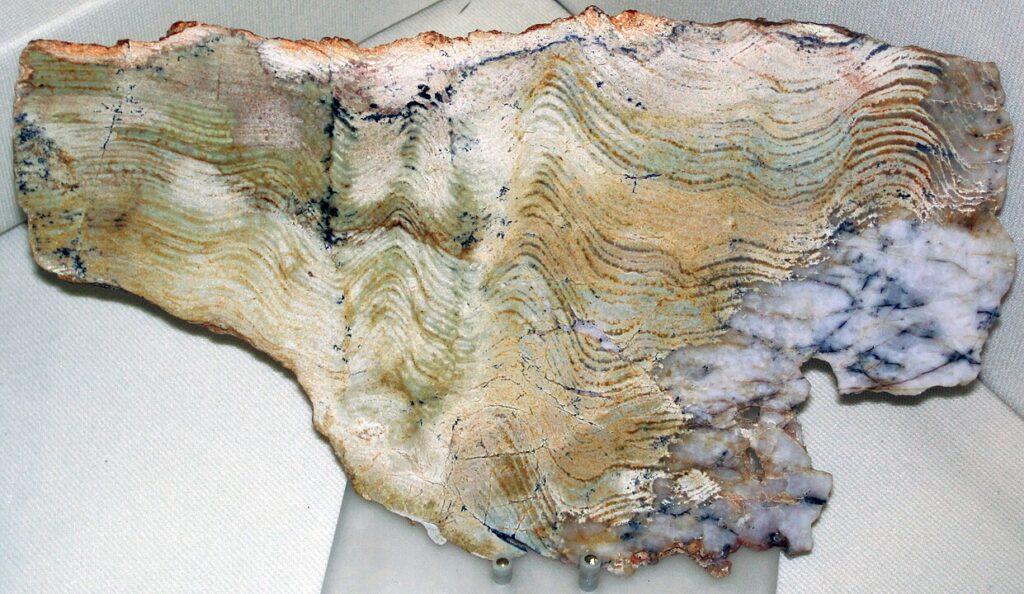
Some creationists take issue with the fossilized lifeforms found in the Precambrian, like those evidenced by the presence of stromatolites. Aside from the theological implications, which we will discuss later in the article, Geologist Maxwell Hunter argues that if God created these organisms and they died during Creation Week, they would have not been able to fulfill their created function due to their untimely demise.1
Troublesome Volcanics
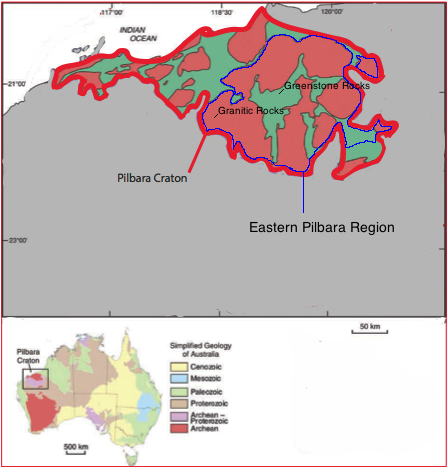
Tas Walker and Hunter point to extensive evidence of volcanic activity in the Precambrian. Volcanic deposits from this time in history exist around the globe. Some of these lava accumulations, like the Pilbara Supergroup of Western Australia, are up to 22 kilometers thick! In order to form this volcanic deposit in even six days, it would have to form at a rate of 3.67 kilometers of lava per day! It is for this and other reasons that Walker and Hunter believe most or all of the Precambrian deposits should have formed during the Flood.2,3
The Impact on Creation Week
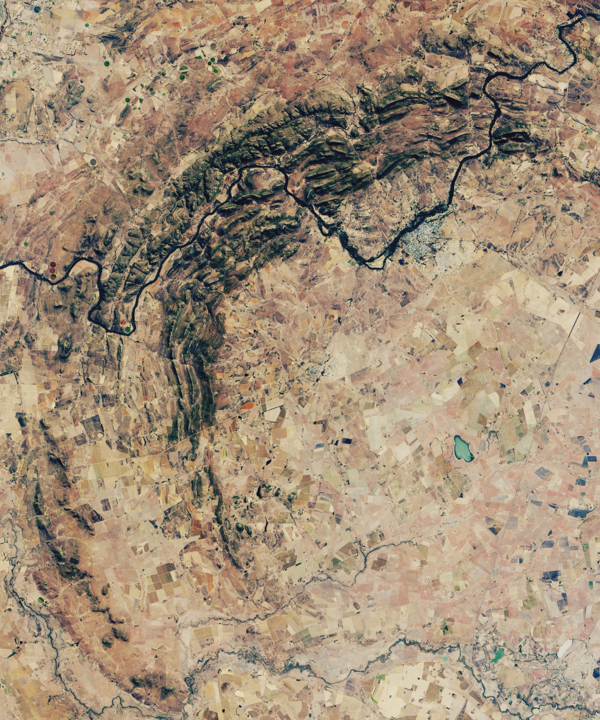
As discussed earlier in this series, the Precambrian record is rife with evidence of very large extraterrestrial impacts. Recall the Vredefort Crater, from Part II of this series, which is a 43-mile wide bowl-shaped depression in present day South Africa. Dr. Michael Oard has expressed concern with attributing these impacts to Creation Week. He argues that hundreds of large impacts within the short timeframe of a few days would destroy life on earth. He also questions whether such heavy bombardment can be consistent with the pronouncement that creation was “very good.”4
Supernatural or Not?
A number of young-earth creationists are skeptical of Snelling and Dickens’ model. The Precambrian rock layers, they point out, do not appear to have been supernaturally created. They acknowledge that the layers appear to have formed underwater. They argue, however, that Precambrian rocks differ in no substantial way from those allegedly formed after Creation Week.
Steven Robinson regards virtually all of the geologic record as the aftermath of the Flood. As such, he does not believe any remnants of the pre-Flood era or Creation Week specifically exist today. He states the following:
“[P]rimary generation of continental crust may be seen going on throughout Earth history, from the Archaean continuously (but at a declining rate) to the present day. The geological record does not reflect a (virtually) instantaneous act of creation, followed by any interval identifiable as the pre-Flood era, followed by massive erosion and redeposition of a pre-existing land-mass.”5
Miracles of Creation
As shown above, there are a variety of critiques on the Creation Week Precambrian model. Nevertheless, they all seem centered on a single point. There is indeed evidence for a well-established and lengthy sequence of processes recorded in the Precambrian geologic record. It does not seem compatible with events that could naturally occur in less than a week. How can we reconcile these events with a six-day Creation Week?
There is an underlying assumption of the critics against the Precambrian record. They do not think the Precambrian rocks resemble the work of a supernatural act of creation. But just what does a supernaturally created rock look like? Speaking more broadly, what does a supernaturally created anything look like? Can we differentiate these things from others that were not supernaturally created?
In regards to rocks, the Bible gives no such answer either. Nevertheless, it does provide us with analogies. With a closer look, we can infer what we might expect to see in whatever rocks formed during Creation Week.
Signs of Maturity

John 2 records Jesus’ first miracle of turning water into wine at a wedding feast in Canaan. This wine was virtually identical in appearance and taste to that of wine pressed and fermented by natural processes. In similar fashion, Jesus did not spend countless hours baking bread and catching naturally born fish. Yet during the feeding of the 5,000, recorded in Matthew 14:13-21, it had every appearance that that was the case.
We even see helpful hints in Creation Week itself. God did not create Adam as a fertilized zygote. Adam was capable of walking, talking, and naming the animals all within 24 hours of his creation. Despite his instantaneous creation, he had the appearance of a mature human male. And consider the stars also. Aside from the Sun, the Alpha Centauri triple star system are the closest stars to planet Earth. Yet, they are still 4.37 light years away. Should we believe God forced Adam and Eve to gaze at a starless night sky until 4.37 years had passed? Hardly. The whole purpose of the stars was to give light to the earth and be used for signs and seasons (Genesis 1:14-18).
As humans, we try to associate various observations in the universe with familiar processes in our own day-to-day lives. These processes take a certain amount of time to occur in our own personal experience. So when we apply the amount of time allotted to these processes to our universe, it looks old. But from a biblical perspective, the universe is not “old” per se. It is mature.
A Supernatural Precambrian
Let us connect this logic with the Precambrian record. As we have hopefully made clear from Scripture, the observance of a sequence of processes does not necessarily negate an instantaneous creation event. Therefore, if the Precambrian formed during Creation Week, then we can explain the sequence of processes recorded in its rocks the same way.

But instantaneous creation is not the only possibility. Some young-earth scientists have suggested that the events of Creation Week may have occurred in a time-lapse fashion. Visually, an observer might witness the development of different geologic processes unfolding at break-neck speed, albeit at rates constant with each other. There is evidence for this within the text itself. Genesis 1:11-12 records that God had “the earth sprout vegetation, plants yielding seed, and fruit trees bearing fruit in which is their seed, according to its kind, on the earth.” We find another analogy for this recorded in Numbers 17:8. Here, Aaron’s staff “sprouted and put forth buds and produced blossoms, and it bore ripe almonds.”
Creation in Timelapse
Several creation scientists have suggested this time-lapse approach. Dr. Andrew Snelling has proposed that God may have used convective circulation in the earth’s mantle to cause gasses to ascend and be released above it, accumulating to form an atmosphere. At normal, modern day rates, this would have taken far longer than a couple of days to occur. Dr. Snelling has also proposed similar explanations for how God created the earth’s soils, metallic reservoirs, and the continental crust itself.6
Geologist Dr. Ken Coulson took these inferences a step further and used it to develop his Supernatural Formative Processes model. If his model is correct, then God used supernatural rates of change to mature and form the earth during Creation Week. The development of earth over time would be reminiscent of a time-lapse movie. Real geologic environments would emerge and change as God formed Earth over the course of a few days. The Earth’s crust formed as it uplifted from the ancient oceans on Day 3. Plants grew in soil and matured rapidly later on that same day, just as Scripture records. According to Dr. Coulson, a vertical cross-section of Creation Week rocks would unveil a diverse sequence of unconformities, sedimentary rocks, and stromatolites. It is highly probable that this sequence would lack any “anomalies” suggesting the presence of supernatural influences.7
And God Saw That It Was Good
Creationists who do not think the Precambrian largely formed during Creation Week have raised an issue. What about the volcanism and impact events this model requires? Are volcanic eruptions and extraterrestrial impacts consistent with the “very good” status of Creation Week (Genesis 1:31)?
What Does “Very Good” Even Mean?

Many creationists equate “very good” with physical perfection. Some even go so far to claim the second law of thermodynamics was not in effect until after the Curse. Astronomer Dr. Danny Faulkner does not see any scientific or Scriptural support for this. The second law of thermodynamics is in action when we digest food, something we know Adam, Eve, and the animals were capable of doing before the Fall (Genesis 1:29-30). It also directs the flow of thermal energy, which directs heat energy from hotter to cooler. The Sun is much, much hotter than Earth, so radiation flows from the Sun toward Earth.
Dr. Faulkner argues that these lines of evidence invalidate the idea that “very good” equates to physical perfection. Instead, it more likely refers to moral goodness, completion, or purpose, since God completed His work at the end of Creation Week.8 At this point, sin had not yet corrupted the universe.
Additionally, as pointed out in Part V, most of the Precambrian probably formed prior to plant creation on Day 3. All volcanism and impact strikes must have ceased by this point. Therefore, there was no risk to life on Earth from either.
How do we explain evidence of life in the Precambrian?
Another issue that needs to be dealt with is the presence of living organisms in the Precambrian. As we’ve already discussed, we commonly view fossils from the Ediacaran on up as the result of animals buried in the initial phases of the Flood. But there are still fossils of single-celled organisms and the stromatolitic structures they form as far down as the Archean. If the majority of the Precambrian record is from Creation Week, there are only two explanations for these fossils. Either God created these fossils in the earth, or He created living organisms that died during Creation Week. Doesn’t this put death before Adam’s sin?
We should carefully differentiate between biological life and biblical life. Life is extremely difficult to define, even among biologists. Usually, they resort to simply listing attributes of a living thing rather than try to define life itself. Even then, it can be difficult (are viruses alive or not?).
Biblical life is different. Genesis 9:4 refers to life being in the blood. The Hebrew term nephesh chayyah is used to refer to and usually translated as ‘living creatures.’ The Bible also speaks of living things as possessing nostrils (Genesis 7:21-22). Based on this, many organisms that are biologically alive are not biblically alive. Bacteria, for example, have neither blood or nostrils, and do not count as biblically living organisms. Hence, if they were created and even buried and died during Creation Week, it is perfectly consistent with Scripture. The earliest animals that possessed blood and nostrils show up in the fossil record in the lowermost Cambrian. This is long after the appearance of non-biblically alive organisms.
Fulfilling Purpose
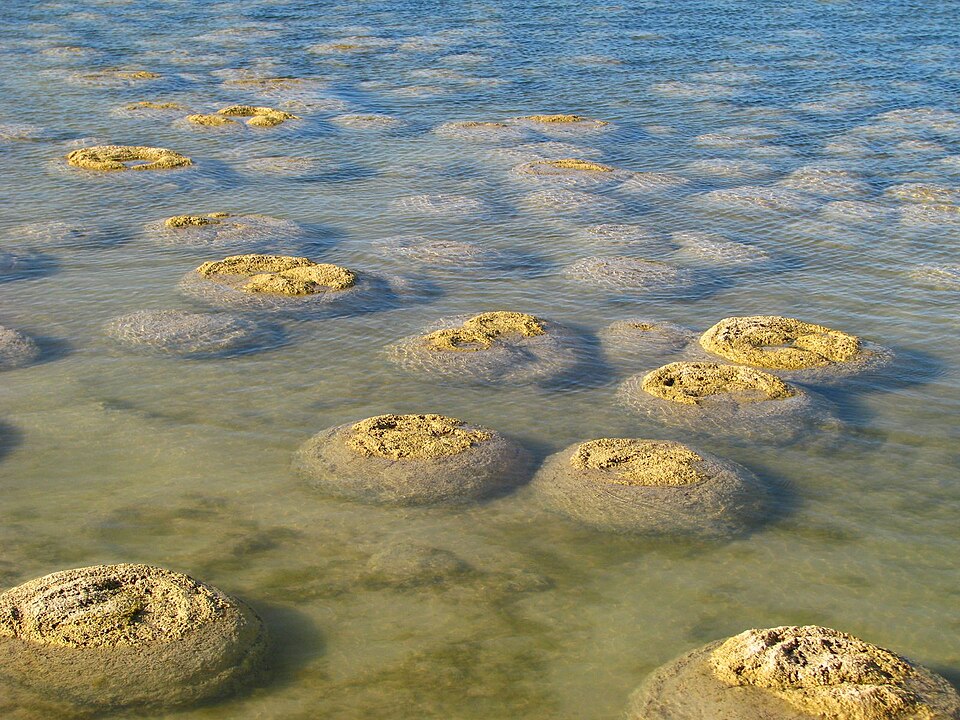
Dr. Coulson has proposed that successions of stromatolites may also represent supernatural formative processes occurring in time-lapse fashion. This is much like the evidence for volcanism and the formation of the continents.
In his model, he suggests God used the stromatolites as the mechanism to infuse the atmosphere with oxygen.9 These structures grew on ancient, continental landmasses. Shallow oceans consequently flooded these landmasses and provided suitable environments for microbes to thrive and construct stromatolites. At some point, this colony of stromatolites was buried and replaced by another stromatolite colony that was also buried. Entire sequences of stromatolites formed on Day 3 of Creation Week. Each stromatolite layer fulfilled a temporary purpose as an oxygen factory. Once its goal was completed, it was buried and replaced with another colony of stromatolites. It, in turn, was also buried after the completion of its mission. By the end of Day 3, the rapidly accelerated processes God used to form the planet had ceased.
On Day 5, God created lifeforms in the ocean. This would have included the Ediacaran fauna. They were probably restricted to specific lagoonal habitats in the pre-Flood world.
Where do we draw the line?
How far should we take this logic? After all, we don’t want to assume that God placed fossils in the ground as well, do we? Did God supernaturally create everything we see around us―trees, mountains, valleys, rivers―exactly as we see it today? Certainly not.
To determine where we should draw the line, we will have to correlate specific sequences in the geologic record with specific times in Scripture.
Work in this area is already underway. As we discussed in Part V, Dr. Snelling and Dickens have already laid the groundwork in their model of Precambrian history. Researchers have tentatively correlated many geologic sequences with specific days of Creation Week, the pre-Flood era, and the initial phases of the Flood. This can help us establish what formed supernaturally from what formed naturally.
In addition, Dickens has done additional work since then. In 2018, he published a comprehensive expansion of this model by applying it to the continent of North America.2 He even proposed specific locations of pre-Flood geography in relation to modern Precambrian areas.10
Looking to the Future of the Past
It is important to understand that Dr. Snelling and Dickens’ model of the Precambrian is just that: a model. Like all scientific models, it is subject to future scientific discoveries or revelations from the Word of God. New insight from either source might cause us to revise it in the future. That said, this model appears to be the most comprehensive Precambrian model developed by young-earth geologists at this point and time.
How might this model change in the future? Geologist Dr. Ken Coulson recently proposed one possible direction. He remains unconvinced that Drs. Austin and Wise’s five criteria for identifying the pre-Flood/Flood boundary are sound. And while he does acknowledge that the Great Unconformity is “perhaps the most persuasive argument” for the beginning of the Flood, he questions whether or not this is truly the case.6 Given the recency of Dr. Coulson’s critiques, young-earth geologists who advocate a start for the Flood at the Great Unconformity have not yet responded to them. However, they provide very interesting questions for geologists who accept this model to answer in the future.
Coulson Critique 1: Erosional Discontinuity?
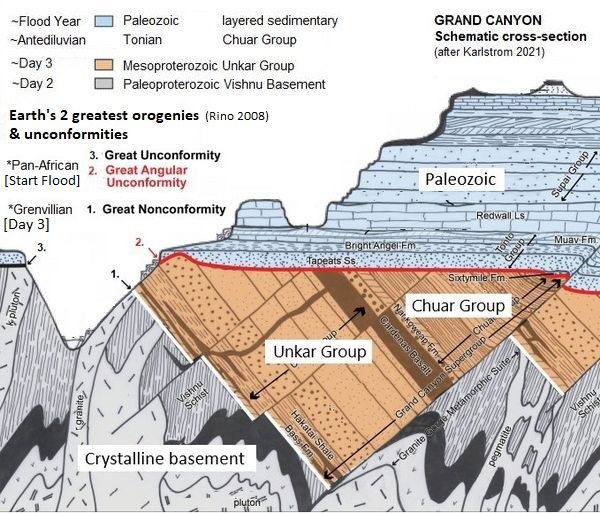
Dr. Coulson points out a substantial amount of geologic activity happened during the events of Day 3 of Creation Week. This included those capable of producing unconformities. Why could the Great Unconformity not have formed at this time instead of at the beginning of the Flood? One potential response could be to point out that the events of Day 3 and the beginning of the Flood could be correlated with two separate erosional surfaces in the geologic record. As already expressed, Dickens’ connects the beginning of the Flood to the Great Unconformity. Meanwhile, he connects the events of Day 3 to another erosion surface called the Greatest Unconformity or Great Nonconformity11 (see image to the right). It can be seen underlying sedimentary layers that are underneath the Great Unconformity.
The layers in between the Greatest Unconformity and the Great Unconformity are often tilted (such as those of the Grand Canyon Supergroup). This suggests they were uplifted during the mountain building associated with the Grenvillian heating event. But since the Great Unconformity overlies these tilted layers, it must have happened after the uplift and tilt occurred. While it is still possible that both of these events happened on Day 3, those who think the Great Unconformity formed at this time have yet to create a model explaining this.
Coulson Critique 2: Age Discontinuity?
According to Dr. Coulson, this criterion assumes that all of the continents or supercontinent existing before the Flood were above sea level. If there were expansive inland seas or large continental land masses submerged below sea level, then the initial action at the beginning of the Flood would only have eroded solidified bedrock in some locations. In submerged locales, it would have only eroded away soft, unsolidified seafloor sediments like muds and/or clays and shales that accumulated on the ocean bottom after Creation Week.
Coulson Critique 3: Tectonic Discontinuity?
Again, Dr. Coulson points out that this criterion does not take into account the incredible geologic processes occurring during Creation Week.
Coulson Critique 4: Sedimentary Discontinuity?
Once again, Dr. Coulson states that this criterion is only valid if large, inland seas did not exist in the world before the Flood. Thick packages of marine muds, such as lime mud, blanketed already submerged land masses. One possible response could reference the fact that pre-Flood seafloors were only preserved in select locations where portions of it were downfaulted, as is the case in the Grand Canyon region. The destructive erosion at the beginning of the Flood mostly destroyed the Neoproterozoic sedimentary deposits that contain the stromatolites from the hot water reef ecosystems. However, in certain downfaulted areas, they were protected from further erosion.
Coulson Critique 5: Fossil Discontinuity?
Dr. Coulson has particular difficulty accepting this criterion. He points out that Austin and Wise assume there would have been minimal geologic activity between Creation Week and the Flood. Nowhere is this stated in Scripture. On the contrary, the Apostle Paul states:
“For the creation was subjected to futility, not willingly, but because of him who subjected it, in hope that the creation itself will be set free from its bondage to corruption and obtain the freedom of the glory of the children of God. For we know that the whole creation has been groaning together in the pains of childbirth until now.
Romans 8:20–22 ESV
Christians generally agree that this “groaning” and “bondage” includes geologic activity capable of burying and fossilizing complex organisms, like earthquakes, volcanic eruptions, tsunamis and cyclones. The Apostle Paul does not associate the beginning of this “groaning” and “bondage” with the Flood, but with the Fall. As such, Dr. Coulson reasons, we should see the effects of the Fall throughout the geologic record, not just in Flood rocks.
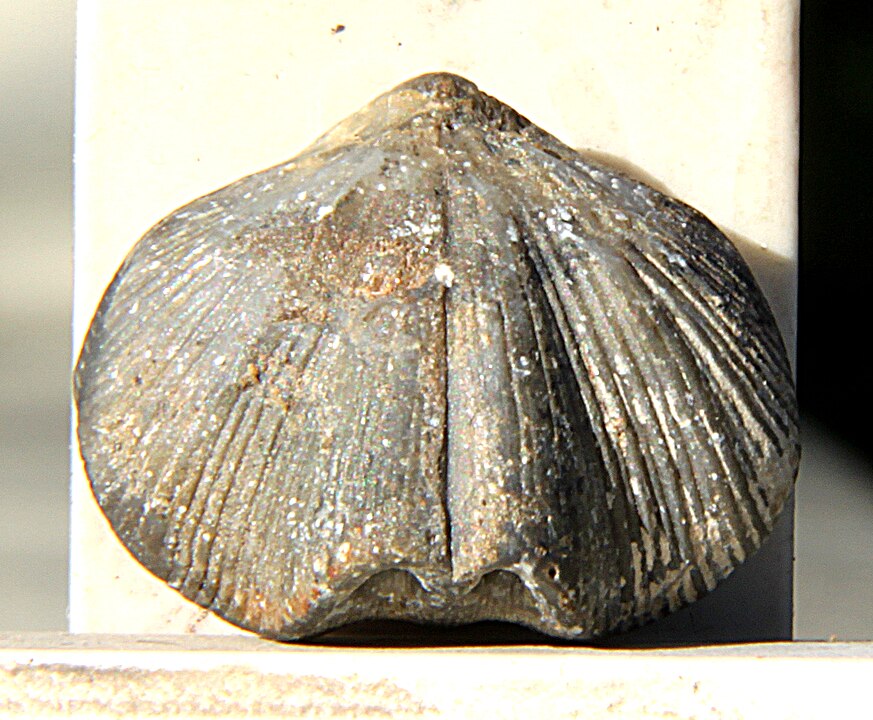
Yet, if the upper Neoproterozoic (i.e. Cryogenian) below the Great Unconformity formed in the fallen world before the Flood, why have we not found even a few complex creatures below the Great Unconformity? We can infer the existence of pre-Flood streams and rivers not only from sequences of upper Proterozoic sandstones and conglomerate deposits, but also from Scripture itself (Genesis 2:10-14). Animals like brachiopods and mollusks have very tough, resilient shells. Why do we not find them preserved in the layers underlying the Great Unconformity?
Dr. Coulson’s Conclusion
To Dr. Coulson, his perception of the pre-Flood/Flood boundary criteria indicates that the entire Precambrian including the Great Unconformity formed during Creation Week. He suggests that the extensive erosion caused by the receding of waters off of the continents on Day 3 may have produced the Great Unconformity. The abrupt appearance of Ediacaran fauna he explains as a consequence of special creation followed by a Curse, when animals began to die.
Again, due to the recency of Dr. Coulson’s critiques, young-earth geologists who argue that the Great Unconformity formed at the start of the Flood have not yet officially responded. One possible outcome is that they could eventually incorporate the evidence Dr. Coulson presents. On the other hand, it might be possible that another explanation could be conceived for the issues Dr. Coulson has highlighted. Whatever happens, one thing is for sure: the work of reconstructing the Precambrian’s history continues! And we at New Creation will keep you informed.
A Matter of Faith
It goes without saying that talk of rapidly accelerated supernatural processes is not going to appease skeptics. This goes back to our earlier discussions on paradigms. Generally speaking, old-earth advocates see the world through the lenses of naturalism. This means that only natural processes are up for consideration. On the contrary, the Christian’s foundation should be the Word of God. This means we ought to be open to the possibility of supernatural intervention.
Can Supernatural Events Leave Supernatural Evidence Behind?
Perhaps one of the biggest takeaways here is that supernaturally formed objects do not necessarily leave evidence of supernatural activity behind. If you took a sample of the wine, bread, or fish Jesus served to a scientist for examination, they would probably scoff at the notion that such things were supernaturally created. Even though the object itself is a physical manifestation, its origin is supernatural. Regardless of whether the object formed in an instant or through supernatural formative processes, it still retains a natural history.
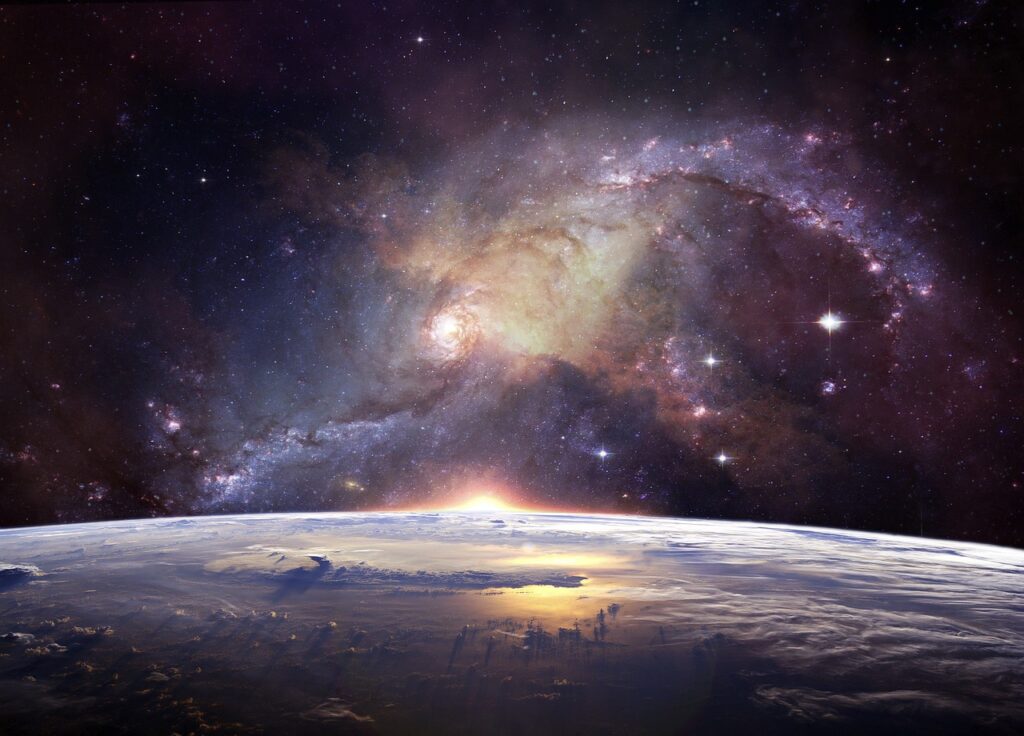
Since the supernatural is not accessible for testing via the scientific method, we cannot directly test whether something was created via supernatural processes. Accepting this requires historical evidence from God’s Word and faith. As the author of Hebrews 11:3 states, “By faith we understand that the universe was created by the word of God.” Dr. Coulson points out that we can fully appreciate this verse when stated negatively: “Without faith, we cannot understand that the universe was created by the word of God.” This is why it is not possible to accept the true origin of our planet from a secular paradigm.
If most of the Precambrian (Archean to Mesoproterozoic) formed during Creation Week, which is what the evidence indicates, then Christians should really think about it in the same way we would Jesus’ wine, bread, and fish. Each of these are supernatural in their origin, yet exist as physical objects that retain a “natural history.”
Must We Accept a Young Earth on Blind Faith?
“For a fire is kindled by my anger, and it burns to the depths of Sheol, devours the earth and its increase, and sets on fire the foundations of the mountains”
Deuteronomy 32:22, ESV
Humanity was not present when Earth was made. As Christians, we must trust what God says in His Word about how His world came to be. Even if we had been present at the moment of creation, the realm of science would offer limited assistance. The realm of the miraculous exists beyond the confines of scientific methodology. This assertion should not be misconstrued as an endorsement of blind faith. As underscored in earlier installments of this series, there exists substantial evidence challenging the validity of the conventional Precambrian view, which espouses a multi-billion, naturalistic timeline. Moreover, it is important to acknowledge that events of a supernatural nature can yield tangible outcomes, engender geological repercussions, and furnish compelling evidentiary support.
Let’s consider, for instance, the verse from Deuteronomy 32:22, where it mentions that God sets the foundations of the mountains on fire. Whether we understand this verse literally or as a poetic expression, it is undeniably within God’s power to literally ignite the foundations of the mountains. This notion finds support in the description of the Day of the Lord in 2 Peter 3, where it records repeated references to the effects of heat. Furthermore, we should note that the three heating events (Kenoran, Hudsonian, and Grenvillian) are believed to have played a significant role in the Earth’s creation itself.
The realm of science cannot definitively inform us whether God or any other entity (supernatural or otherwise) was the ultimate cause of these heating events. However, as Christians who acknowledge that God created the world as described in Scripture, we can put forth the hypothesis that the evidence we observe today in Archean, Paleoproterozoic, and Mesoproterozoic rocks around the globe aligns with the geological processes corresponding to Day 1, Day 2, and Day 3, respectively (as discussed in Part V).
Is There ANY Evidence for a Young Earth?
The existence of a “maturely-created” planet does not mean there is no evidence that the earth is young. While we may not necessarily expect evidence of youth in the Precambrian Creation Week rocks, the world carried on at largely naturalistic rates of change. Therefore, we should expect to find evidence for a young biosphere (anything related to living organisms). And we do! The discovery of original organic material in fossils, the low levels of bioturbation and burrows, limited evidence of channelized erosion in the layers, and other lines of evidence all strongly support the conviction that the post-Creation Week biosphere is much younger than the old-age paradigm would predict.
As Christians, we do not believe that God created the world just a few thousand years ago by blind faith. It is a faith based on our best understanding of the data at hand, both scientific and scriptural.
The Pilgrimage Continues!
Over the course of this series, we have explored what we know and what we think we know about the vast Precambrian rocks that underlie our feet. We traced the history of our understanding of these rocks, from the Archean basement rocks concealing “Hadean” zircon crystals, the oldest rocks on the planet, to those funny lifeforms of the Ediacaran. Then, we examined the old-earth interpretation of the Precambrian and its flaws. Finally, we looked at various young-earth understandings of the Precambrian record and discovered why one view appears to be the most dominant today. But is the pilgrimage over? Far from it!
The study and exploration of the Precambrian record continues to be an active area of creation research to this day. While we have made significant progress in understanding these enigmatic rocks, numerous mysteries and unanswered questions persist. Young-earth geologists employ a variety of interdisciplinary approaches in their quest to better correlate the events of the Precambrian with those recorded in God’s Word.
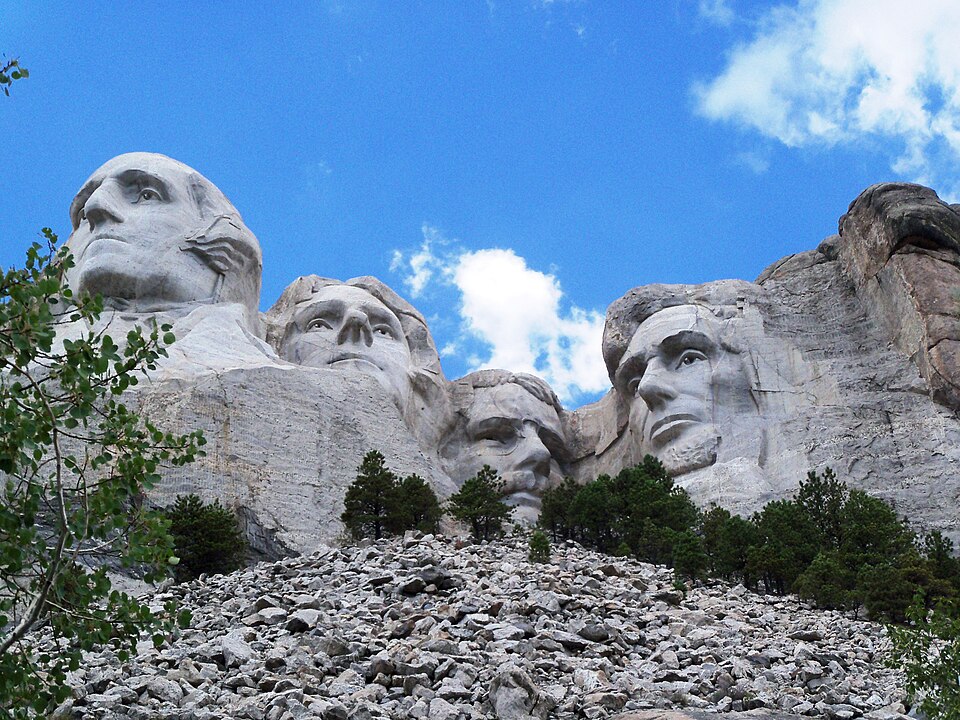
As our Precambrian pilgrimage draws to a close, we once again find ourselves before the timeless countenances of Mount Rushmore. Just as the hands of artists sculpted the stone into recognizable figures, so too did the hands of our Creator mold planet Earth to be inhabited. Ongoing research focuses on unraveling the history recorded in the Precambrian, the geological processes and events God used to shape the early Earth. As new technologies and scientific methods continue to advance, our understanding of the Precambrian is expanding. Due to the limited and often fragmentary nature of the available geological record, certain aspects of these rocks remain speculative or subject to ongoing debate. Nevertheless, young-earth geologists remain dedicated to uncovering the mysteries of the Precambrian and expanding our knowledge of God’s involvement in Earth’s early history.
Acknowledgements
The author wishes to thank Harry Dickens for his involvement in the research and development of this article.
Pilgrimage Through the Precambrian Series
Precambrian Peculiarities (Part II)
The Story of Ancients (Part III)
Chinks in One’s Crust (Part IV)
Footnotes
- Hunter, M. 2022. “The Precambrian: globally correlated and all Flood deposited.” Journal of Creation, 36 (3): 48-59. ↩︎
- Hunter, 2022, 48-59. (Footnote 1) ↩︎
- Walker, T. “Controversial claim for earliest life on Earth.” Journal of Creation 21(1):11–13, 2007, p. 13. ↩︎
- Oard, M. 2014. “Precambrian Impacts and the Genesis Flood.” Journal of Creation, 28(3): 99-105. ↩︎
- Robinson, S. “Flood/post-Flood boundaries within the global stratigraphical record.” Journal of Creation 17(3):52-55, December 2003. ↩︎
- Snelling, Andrew A. 2009. Earth’s Catastrophic Past: Geology, Creation and the Flood. Part II. Dallas, Texas: Institute of Creation Research, p. 627-628. ↩︎
- Coulson, K. P. (2021). “Using Stromatolites to Rethink the Precambrian-Cambrian Pre-Flood/Flood Boundary.” Answers Research Journal, 14, 81–123. ↩︎
- Faulkner, D. R. (2014). “Interpreting Craters in Terms of the Day Four Cratering Hypothesis.” Answers Research Journal, 7, 11–25. ↩︎
- Coulson, K.P. 2020. Creation Unfolding: A New Perspective on Ex Nihilo. Phaneros Press, pp. 55-57. ↩︎
- Dickens, H. 2018. “North American Precambrian geology–A proposed young earth biblical model.” In Proceedings of the Eighth International Conference on Creationism, ed. J.H. Whitmore, pp. 389–403. Pittsburgh, Pennsylvania: Creation Science Fellowship. ↩︎
- Dickens, H. 2023. Personal Correspondance. ↩︎

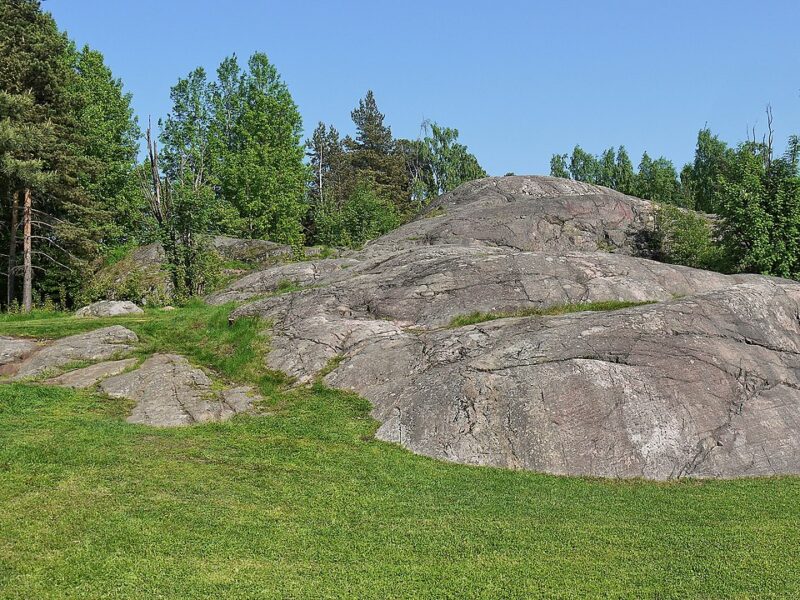
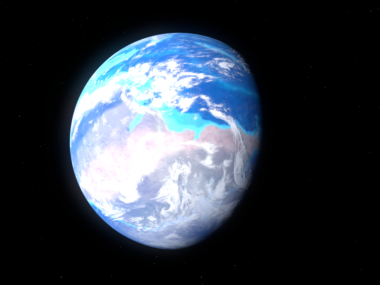
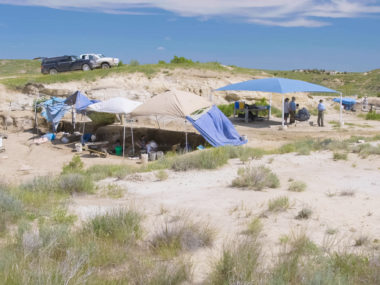
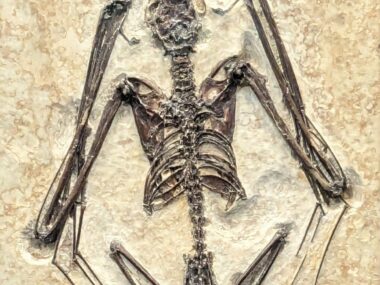

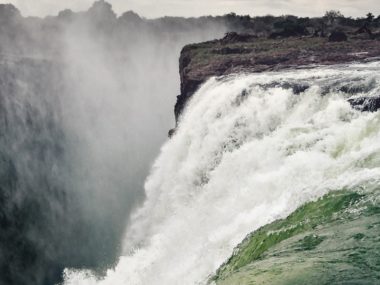
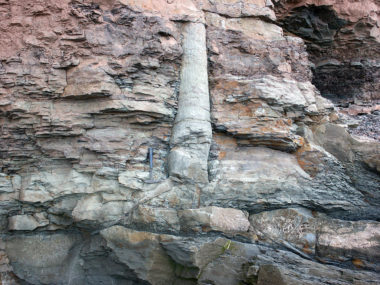




Could there be a layer under the Precambrian layer? Was the earth knocked off its foundation and sunk down into the ocean during the flood to the point you only see the layer at the time of the flood?
There is a third option – that Gen 1:3-31 is actually describing the creation of the earth’s biosphere in six literal days, with the heavens and the earth having been created in the beginning (Gen 1:1), and an empty and uninhabited earth existing prior to creation week (Gen 1:2). This is still young age creationism – six literal creation days, no death of sensient creatures before the fall, and a cataclysmic global flood that deposited most of the fossils. But it implies an old universe and old Precambrian, which solves the thorny problems associated with the Precambrian and distant starlight.
Don’t use words like Cambrian, PreCambrian as they just pander to the Evolutionists!
PreCambrian is just the crust that hardened and stood out above the water ball that GOD made Earth as.
And don’t forget Enoch wrote Earth is filled with hot water – not liquid iron!